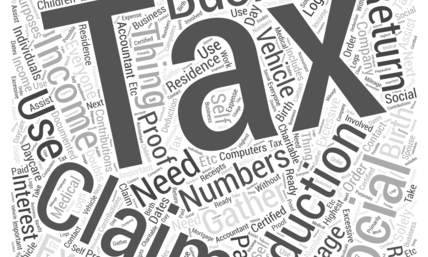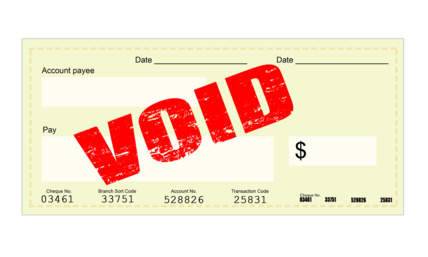What is Form 1040 Schedule F?
Form 1040 Schedule F is a tax form used by the United States Internal Revenue Service (IRS) for reporting farm income and expenses. This form should be filed alongside Form 1040, 1040-SR, 1040-NR, 1041, or 1065, depending on the taxpayer's filing situation. Schedule F is specifically designed for farmers and ranchers who operate a farming business to report their profits and losses.
The form is used to provide detailed information about the income and expenses related to the farming business, including sales of livestock, produce, grains, or other products, as well as the cost of farm supplies, labor, and depreciation of farm equipment. The net income or loss calculated on Schedule F is then transferred to the main tax form (such as Form 1040) and combined with income from other sources to determine the taxpayer's overall taxable income and tax liability.
Farming activities may be subject to state and local taxes, as well as other requirements such as business licenses and fees. Taxpayers should check with their state and local governments for more information on these additional obligations.
Who needs to file Form 1040 Schedule F?
Form 1040 Schedule F needs to be filed by individuals who operate a farming or ranching business in the United States and have farm income and expenses to report. This includes farmers, ranchers, and others who are involved in cultivating land, raising livestock, or producing agricultural products for sale.
Specifically, you should file Schedule F if you:
-
Operated a farm for profit, either as the owner or tenant.
-
Received income from cultivating, operating, or managing a farm for someone else in return for a share of the farm's production or profits.
-
Filing Schedule F is necessary to report farm-related income and expenses, calculate the net profit or loss from the farming business, and determine the overall taxable income and tax liability on your individual income tax return (Form 1040 or one of its variations).
The standard mileage rate for business purposes has been set at 58.5 cents per mile from January 1, 2022, through June 30, 2022. From July 1, 2022, until December 31, 2022, the rate increases to 62.5 cents per mile.
Farmers and ranchers experiencing drought conditions may qualify for extended tax relief. Those who are compelled to sell specific livestock due to drought may have additional time to replace the livestock and defer taxes on gains resulting from the forced sales. For more information, refer to IRS Tax Tip 2022-152.
A new form, Form 7205, has been introduced for claiming the Energy Efficient Commercial Buildings Deduction under IRC 179D. This form, along with its separate instructions, is used to claim deductions for eligible energy-efficient commercial building expenses.
Farmers employing the cash accounting method report income during the tax year it is received from purchasers. Farm-related expenses are deducted in the tax year they are paid out.
With the accrual accounting method, both income and expenses are recorded in the year the transactions take place, regardless of whether the money is received or disbursed in the subsequent year.
Should you need to produce paystubs for your employees in the ranch, you can check out the paystub generator.
Who is not required to file Form 1040 Schedule F?
Individuals who are not required to file Form 1040 Schedule F typically include those who:
-
Do not operate a farming or ranching business and have no farm income or expenses to report.
-
Have income from a hobby farm, which is not considered a for-profit farming activity, and therefore should report hobby income and expenses on Schedule 1 (Form 1040), not on Schedule F.
-
Receive rental income from farmland as a landlord, and are not actively participating in the farming or management of the land. In this case, the rental income should be reported on Schedule E (Form 1040) instead of Schedule F.
-
Are involved in agricultural activities as an employee and receive wages or salary, rather than a share of the farm's production or profits. In this situation, the earned income should be reported on the main Form 1040 and not on Schedule F.
If you do not fall into any of these categories and have farming income and expenses, you are likely required to file Form 1040 Schedule F to report your farm-related financial activities.
When is the deadline for Form 1040 Schedule F?
The deadline for filing Form 1040 Schedule F is the same as the deadline for filing your individual income tax return, which is typically on or around April 15th of the following year. Since Schedule F is an attachment to Form 1040 or its variations (such as Form 1040-SR or 1040-NR), it must be submitted along with the main tax return.
However, the deadline can vary in certain situations:
-
If April 15th falls on a weekend or a public holiday, the deadline is extended to the next business day.
-
Taxpayers living and working abroad or those on military duty outside the United States usually have an automatic two-month extension, making their deadline June 15th.
-
Extensions can be requested by filing Form 4868 (Application for Automatic Extension of Time to File U.S. Individual Income Tax Return) before the original deadline, granting an additional six months to file the tax return (until October 15th). Keep in mind that this is an extension to file, not an extension to pay any taxes owed.
What happens if I don't file Form 1040 Schedule F?
If you are required to file Form 1040 Schedule F but fail to do so, you may face several consequences, including:
-
Penalties and interest: The IRS may impose penalties for failure to file and failure to pay taxes owed. Additionally, interest will accrue on any unpaid tax balance from the due date of the return until the date the taxes are paid in full.
-
Inaccurate tax return: By not including Schedule F with your tax return, you are not accurately reporting your farm income and expenses, which may lead to an incorrect calculation of your taxable income and tax liability. This could result in underreporting or overreporting your income and taxes owed, potentially leading to further penalties and interest.
-
Increased risk of audit: The IRS may be more likely to select your tax return for an audit if you fail to include required forms or schedules, such as Schedule F. If the IRS audits your return and discovers unreported farm income, you may face additional taxes, penalties, and interest.
-
Loss of deductions and credits: Not filing Schedule F means you won't be able to claim deductions for farm-related expenses or take advantage of any available tax credits that could reduce your tax liability.
To avoid these consequences, it's essential to file a complete and accurate tax return, including Form 1040 Schedule F if you have farming income and expenses. If you are unsure about your filing requirements or need assistance, consider consulting a tax professional to ensure you are in compliance with IRS regulations.
What supporting documents do I need to file with Form 1040 Schedule F?
When filing Form 1040 Schedule F, you don't need to submit supporting documents along with your tax return. However, you should keep accurate and detailed records of your farm income and expenses to substantiate the information reported on Schedule F. These records will be important in the event of an audit or if you need to amend your tax return.
Some of the supporting documents and records you should maintain include:
-
Sales receipts and invoices for livestock, crops, and other farm products sold.
-
Purchase receipts for farm supplies, equipment, and other expenses.
-
Records of labor costs, including wages, payroll taxes, and benefits paid to employees.
-
Lease or rental agreements for land, equipment, or other farm-related assets.
-
Depreciation schedules for farm equipment and other depreciable assets.
-
Records of any government payments, subsidies, or grants received.
-
Loan and interest payment documentation for farm-related debts.
-
Records of any casualty losses, insurance claims, or disaster assistance received.
-
Vehicle mileage logs, if you claim a deduction for business use of your vehicle based on the standard mileage rate or actual expenses.
By maintaining well-organized and thorough records, you will be better prepared to complete Schedule F accurately and address any questions or issues that may arise during the tax filing process or in the event of an audit.
What are the additional forms I need to file?
Additional schedules and forms you may need to file are as follows.
-
Schedule E (Form 1040), Part I, for reporting rental income from pastureland based on a flat charge and for reporting farm rental income and expenses of a trust or estate based on crops or livestock produced by a tenant. Report pasture income from caring for someone else's livestock on Schedule F (Form 1040), line 8.
-
Schedule J (Form 1040) to calculate your tax by averaging your farm income over the previous three years, which may reduce your tax.
-
Schedule SE (Form 1040) to pay self-employment tax on your farming business income.
-
Form 461 to determine excess business loss.
-
Form 3800 to claim any general business credits.
-
Form 4562 to claim depreciation (including the special allowance) on assets placed in service in 2022, to claim amortization starting in 2022, to make a Section 179 election to expense specific property, or to report information on vehicles and other listed property.
-
Form 4684 to report a casualty or theft gain or loss involving farm business property, including purchased livestock held for draft, breeding, sport, or dairy purposes. Refer to Publication 225 for more information on reporting various farm losses, such as losses due to livestock death or damage to crops or other farm property.
-
Form 4797 to report sales, exchanges, or involuntary conversions (excluding casualties or thefts) of certain farm property. Use this form to report sales of livestock held for draft, breeding, sport, or dairy purposes.
-
Form 4835 to report rental income based on crop or livestock shares produced by a tenant if you didn't materially participate in the management or operation of a farm. This income is not subject to self-employment tax. See Publication 225.
-
Form 6198 to calculate your allowable loss if you have a business loss and amounts invested in the business for which you aren't at risk.
-
Form 7205 to claim the Section 179D deduction for qualifying energy-efficient commercial building expenses.
-
Form 8300 to report cash payments over $10,000 received in a trade or business.
-
Form 8582 to determine your allowable loss from passive activities.
-
Form 8824 to report like-kind exchanges.
-
Form 8990 to calculate any interest expense limitation and carryover amount. However, small business taxpayers are not subject to the business interest expense limitation and are not required to file Form 8990. Additionally, certain farming businesses and specified agricultural or horticultural cooperatives can choose not to have the limitation apply.
-
Form 1045 to request a refund resulting from a carryback loss.
How do I file for Form 1040 Schedule F?
To file Form 1040 Schedule F, follow these steps:
-
Obtain a copy of Schedule F: Download Schedule F (Form 1040) from the IRS website or obtain a paper copy from your local IRS office or a tax professional.
-
Complete Schedule F: Fill out Schedule F by providing information about your farming income and expenses. The form is divided into several sections, including income, expenses, and a section to calculate your net farm profit or loss. Follow the instructions on the form to complete each section accurately.
-
Transfer the net profit or loss to your main tax return: After calculating your net farm profit or loss on Schedule F, transfer the amount to your main tax return (Form 1040, 1040-SR, 1040-NR, 1041, or 1065, depending on your filing situation). This amount will be combined with income from other sources to determine your overall taxable income and tax liability.
-
Attach Schedule F to your main tax return: Schedule F must be submitted as an attachment to your main tax return. If you are filing electronically, the tax software will include Schedule F with your return. If you are filing a paper return, attach Schedule F to your main tax return before mailing it to the IRS.
-
Keep records and supporting documents: Although you don't need to submit supporting documents with your tax return, it's essential to keep accurate and detailed records of your farm income and expenses. Maintain these records for at least three years from the date you filed your tax return, as they may be needed in the event of an audit or if you need to amend your tax return.
-
File your tax return by the deadline: Ensure that you submit your tax return, including Schedule F, by the appropriate deadline (typically April 15th or the next business day if April 15th falls on a weekend or holiday). If you need more time to file, request an extension using Form 4868 (Application for Automatic Extension of Time to File U.S. Individual Income Tax Return) before the original deadline.
If you need assistance with preparing and filing Schedule F, consider consulting a tax professional or using tax preparation software that supports Schedule F to ensure accuracy and compliance with IRS requirements.
Where should I mail Form 1040 Schedule F to?
Form 1040 Schedule F should not be mailed separately, as it is an attachment to your main tax return. To determine where to mail your tax return, including Schedule F, you need to refer to the instructions for the main form you are filing (Form 1040, 1040-SR, or 1040-NR). The instructions provide mailing addresses based on your state of residence and whether you are enclosing a payment with your return.
If you are filing electronically, you don't need to worry about mailing your return, as the tax software will include Schedule F with your main tax return and transmit everything to the IRS.
Can I file Form 1040 Schedule F electronically?
Yes, you can file Form 1040 Schedule F electronically. When you use tax preparation software or work with a tax professional who files electronically, Schedule F will be included with your main tax return (Form 1040, 1040-SR, or 1040-NR) and submitted to the IRS electronically.
Filing electronically is a convenient and secure method, reducing the risk of errors and typically resulting in faster processing of your return and any refund you may be owed. The IRS encourages taxpayers to file electronically whenever possible for a more efficient and accurate tax filing experience.













